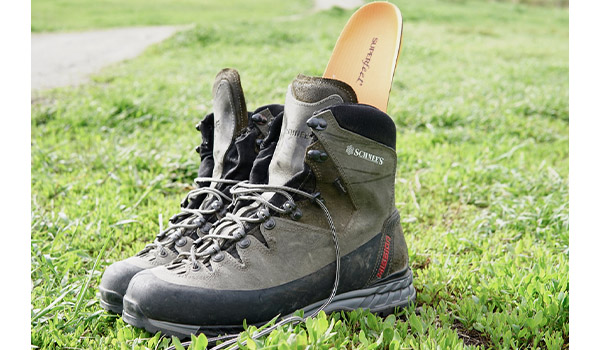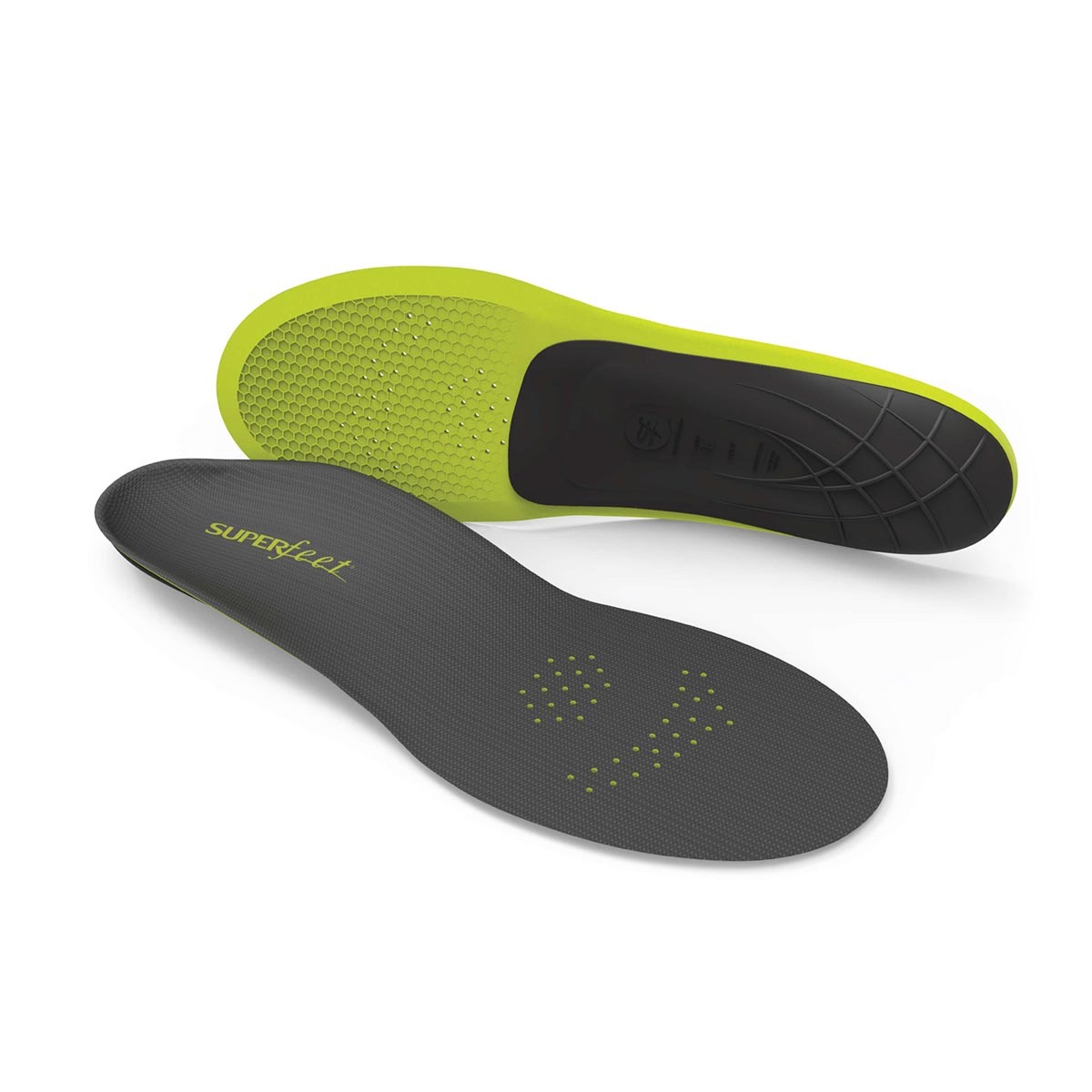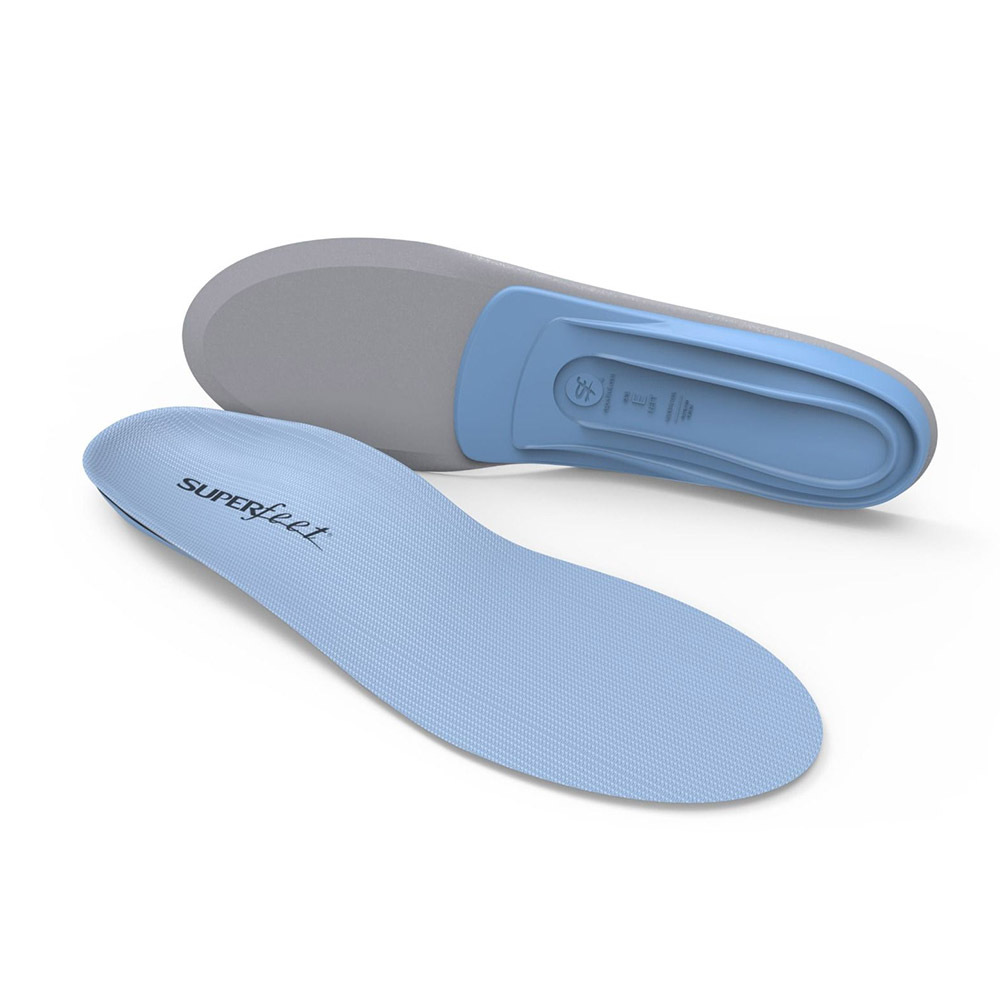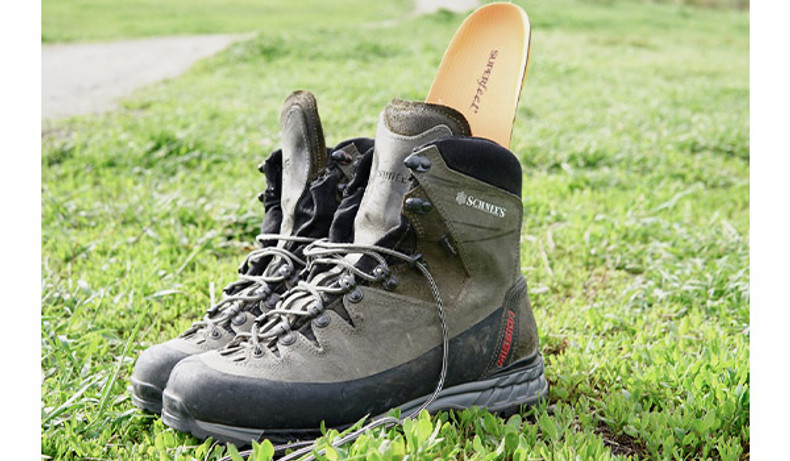
Not all feet are created equal, and in my case, sometimes cursed. With high arches, narrow heels, extra wide feet along with bouts of plantar fasciitis, I've gone to Hell and back trying to get my boots to fit properly and eliminate pain in my everyday shoes. Superfeet have basically saved my life, and for the price they're tough to beat.
If you aren't familiar with Superfeet, they are an after-market insole company that essentially makes over-the-counter "orthotics." I only use quotes here because in my mind a true orthotic is a little more cumbersome than what Superfeet provides--like the ones you get from a Pediatrist or Sheep Feet where your feet are molded and your orthotics are built specifically for your feet. However, these custom orthotics usually run anywhere from $150-$300, $400 or even more in some cases. If you can fork over that kind of dough, they are a great option. All that aside, for the price of around $50 Superfeet are a great option that don't break the bank, and can make a massive difference in the fit and feel of your shoes, hunting boots especially.
Superfeet are designed with a plastic or carbon fiber arch support and a heel cup that vary in height and depth depending on the design. So depending on your feet and the boots that you're trying to put them into, there are usually a couple of options that will work with your setup. I'll get into the pros and cons of each model we cary shortly, but first let's address the "why Superfeet" question.
The most common question about any orthotics is the obvious one, "How do I know if I need an Orthotic?" The obvious answers are "If you have high arches" or "if your feet hurt after spending a lot of time walking and hiking." In both cases, I always recommend trying out an orthotic. Supporting your arches will prevent them from collapsing throughout the day, which can lead to foot cramps and general soreness, and in some instances just some additional padding to help with shock absorption will help a lot with long term comfort.
Aside from the obvious, sometimes orthotics are a great match even if you don't necessarily need them. I've had great success in using them to get a more precise fit with some of our customer's trying out boots.
A common issue with people trying on boots is their heel will slip up when they are walking. This can be a result of incorrect size, but more often than not it's because that person has narrow heels. To some extent this can be solved by trying on other boots with a more narrow design, but you can usually resolve this issue with Superfeet. You'll probably have to try out a couple, but because Superfeet have a cup-shaped heel they will stabilize your heel into a more consistent space, resulting in a more secure fit and therefore less heel slip.
Another issue people have is their feet sliding into the front of their boots during descents. This can become incredibly painful, and in some instances result in loosing toe nails. Having skied moguls competitively for several years, I've lost my fair share of them and I wouldn't wish it on my worst enemy. This is where an arch support can really save your feet even if you don't necessarily have high arches. The arch of the orthotic will help hold your feet securely in the back of the boots and prevent them from sliding forwards. Combined with the heel cup on Superfeet, you're essentially using the orthotics to not only support your feet, but lock them into place where they are meant to be.




Now getting down to the brass tax, which Superfeet do you get? It's kind of a loaded question, but here's my opinion on the ones we carry.
Superfeet Green Insole - The original Superfeet. Has the highest arch and deepest heel cup. I think it's the most comfortable for everyday wear, but it doesn't work great for me in my boots. Because of the high arch and deep heel cup, it raises my heel too much and it almost feels like I'm leaning forwards or walking on wedges. I used these for a really long time and just dealt with it, but now they stay in my sneakers.
Superfeet Orange Insole - The same heel cup as the Green, but with a slightly lower arch. The big standout on this insole is the silicone metatarsal pad. The pad takes up the entire toe box and is perfect for people looking for some extra cushion. The downside of that is this option takes up a lot of space in your boots, and you'll likely have to size the boots to these insoles.
Superfeet Blue Insole - These are what I usually suggest to customers to help their boots fit better. They have a pretty low profile and take up about the same amount of space as the insoles that come stock in boots, so you can put these insoles in and expect your boots to feel about the same, only more comfortable and with a more secure fit once you lace your boots up.
Superfeet Carbon Insole - These are great for insulated boots where you don't have a lot of extra space to work with. They take up less volume in a pair of boots than stock footbeds, and have a pretty low arch and almost no heel cup. What I don't like about these is because they are so minimal they don't absorb shock really at all.
Superfeet Merino Insole - Essentially just a cold weather version of the Blue insole. Great for late season hunting where it's going to be cold and you want to run your uninsulated boots because you'll be hiking a lot.
At the end of the day the most important factor is what's comfortable. As the saying goes, "If it's not broken, don't fix it." But if you're looking to maximize your comfort and struggling to get your boots to fit like a glove, Superfeet are a great option that doesn't break the bank.


